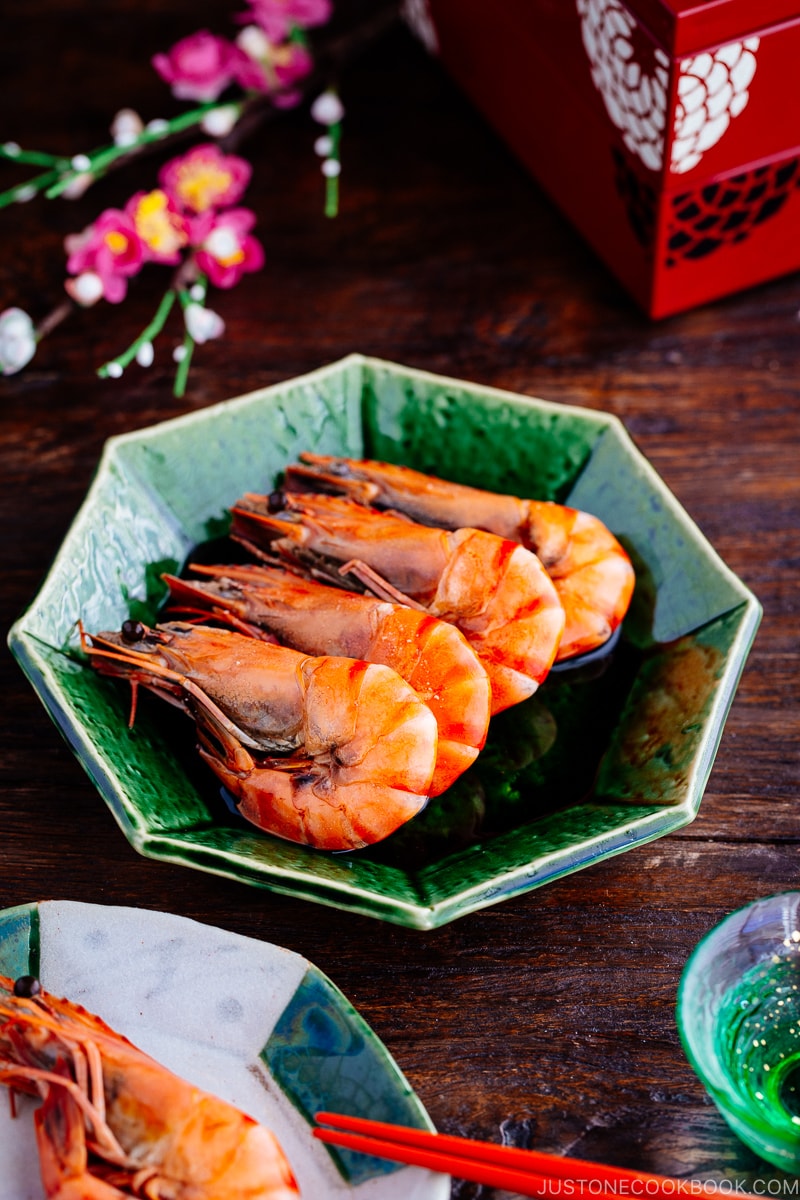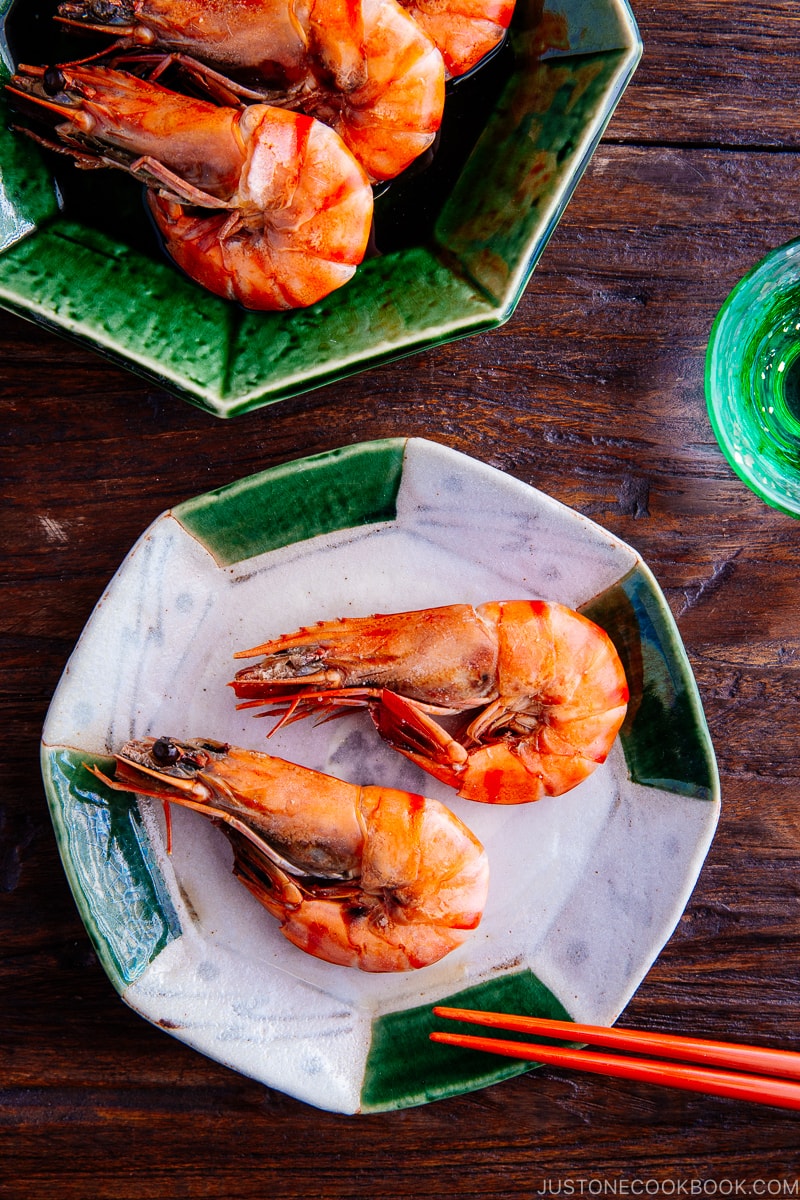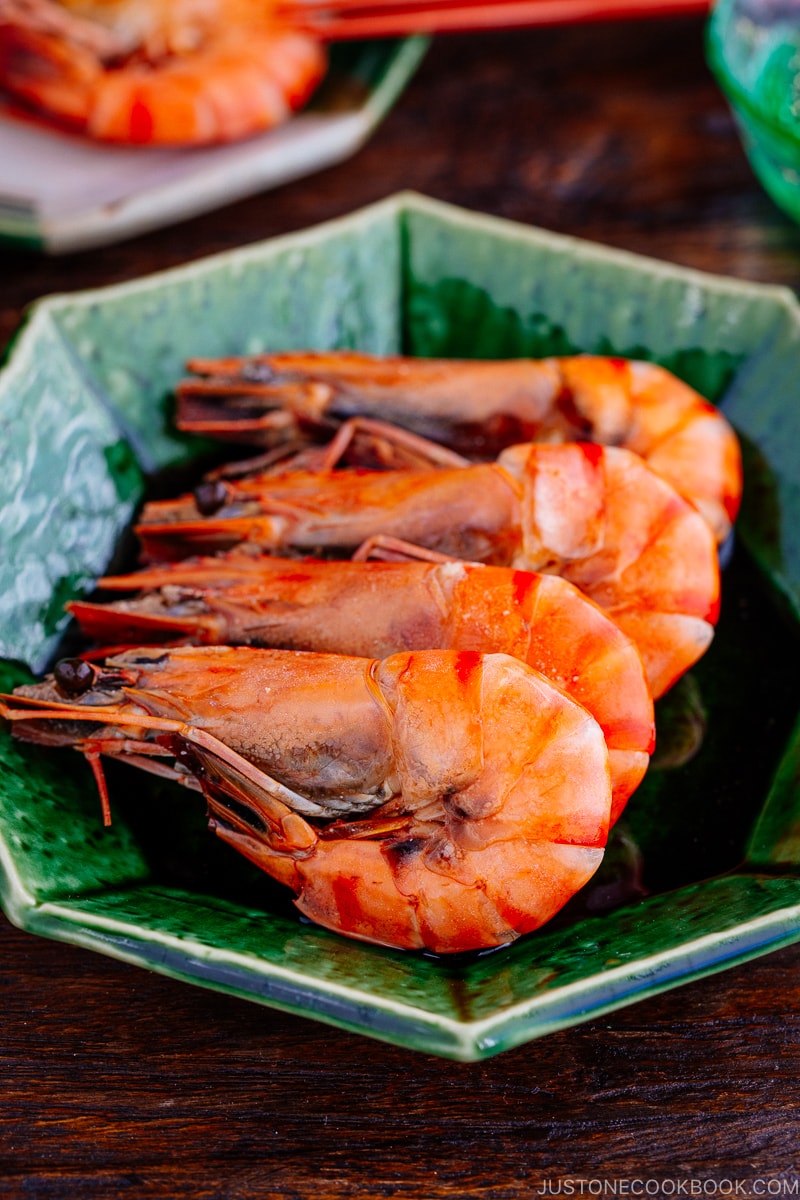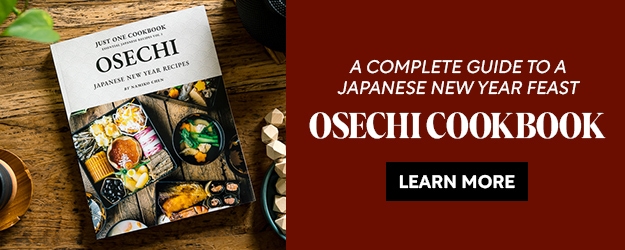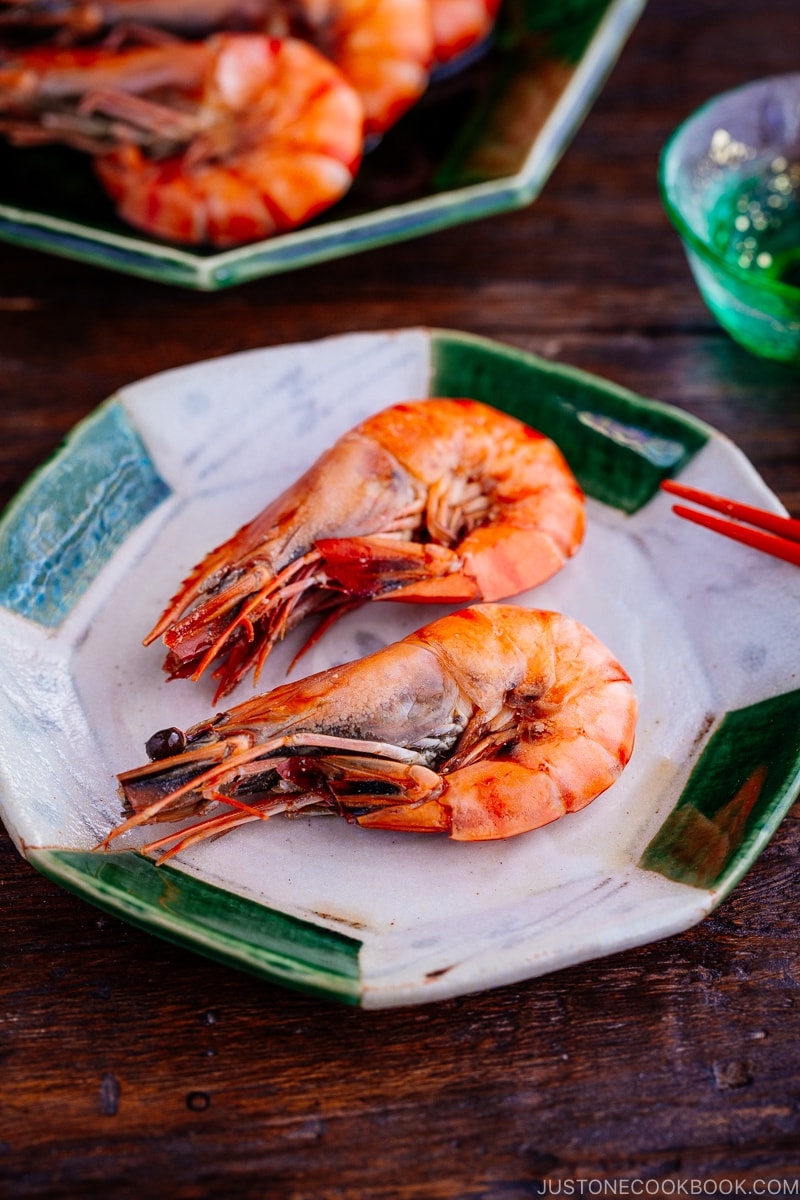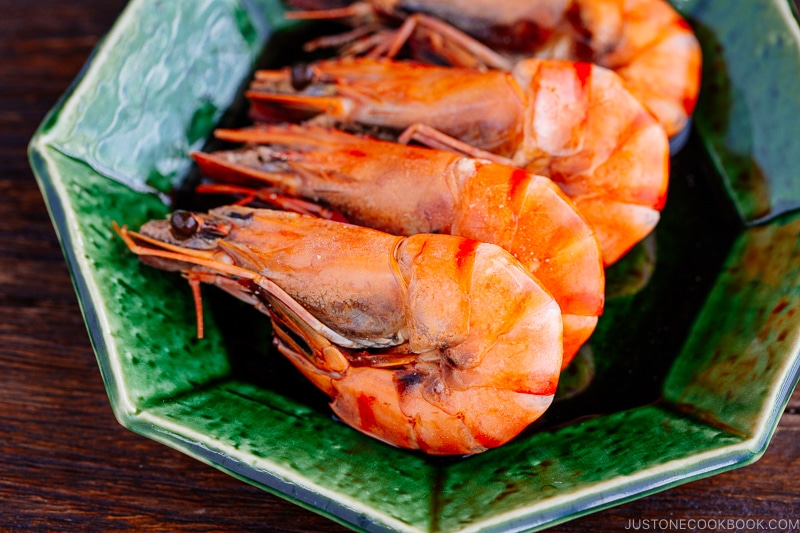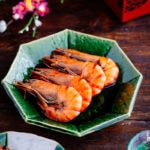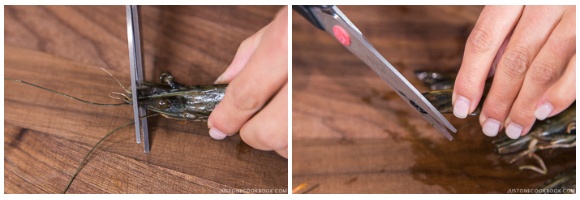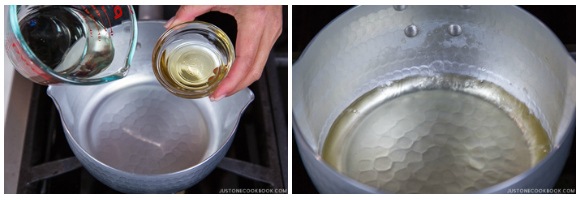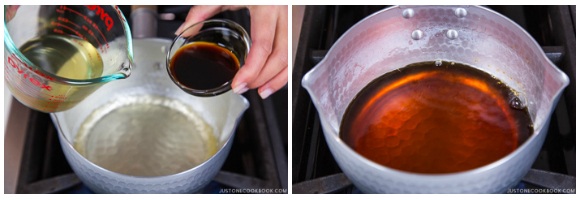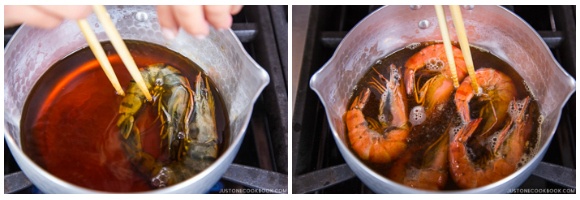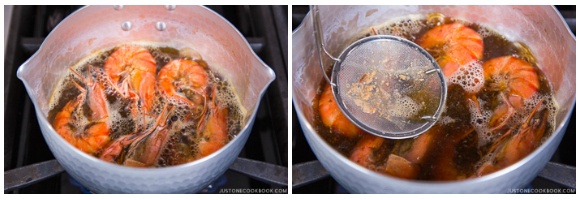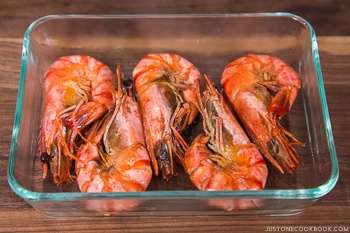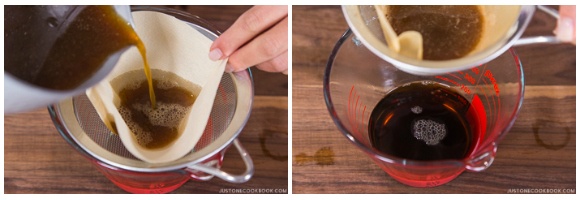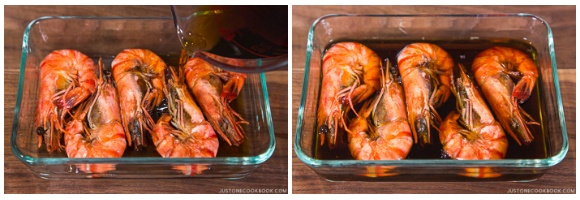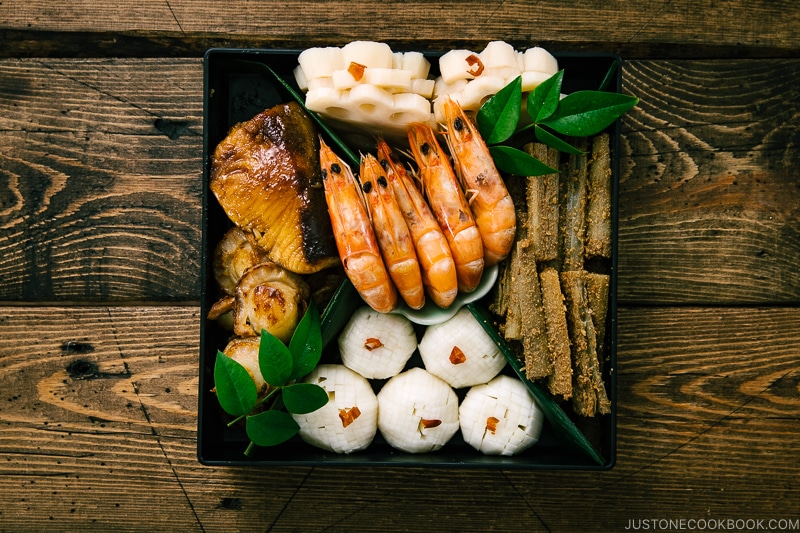Why Do Japanese Eat Shrimp for the New Year?
Shrimp with bright vermilion color brings beauty into the Japanese New Year feast, Osechi Ryori. This shrimp is always served with head and shell on for the “grand” look on the table. The reason why shrimp is used in Osechi Ryori is not just because of its beautiful looks, but it also signifies old people because shrimp has a mustache (We call “hige” (mustache in Japanese) but they are actually antennae) and is hunchbacked. So eating shrimp is believed to impart a long life symbolizing a long beard and bent back.
3 Tips to Make Successful Simmered Shrimp
1. Devein the Shrimp with Shell and Head-on
Devein the back of the shrimp with a skewer. The vein runs right along the back. Insert the tip of the skewer sideways about ½ inch down from the head of the shrimp, and pull the skewer tip up towards you. This will lift up the vein and you can pull off the vein with the skewer or with your fingers. If the vein is broken, then insert again a bit lower towards the tail. If you can’t find the vein, then don’t worry about it.
2. Do Not Overcook Simmered Shrimp
Overcooked shrimp is not delicious and will end up dry and tough. It’s important to cook the shrimp just right. For the standard black tiger shrimp, you only need to cook them for 4 minutes, unless it’s much smaller or larger than the typical size. So keep in mind that you will only need to cook between 3.5 to 5 minutes for the shrimp. Make sure to place all the shrimp in the pot around the same time, so all of them finish cooking at the same time as well. If you spend too much time lining up shrimp in the saucepan, the first shrimp might be overcooked or the last shrimp is undercooked (depends on when you start timing).
3. Strain/Filter the Cooking Liquid for Simmered Shrimp
If you are not a coffee drinker, you may not keep a coffee filter around. But if you do, I highly recommend using a coffee filter or paper towel to filter the cooking liquid when you strain it. The cooking liquid contains fats and protein from the shrimp (despite the meticulous skimming while cooking). As you will be soaking the shrimp in the cooking liquid overnight, the well-filtered clean cooking liquid will help the shrimp look beautiful as a final result. Wish to learn more about Japanese cooking? Sign up for our free newsletter to receive cooking tips & recipe updates! And stay in touch with me on Facebook, Pinterest, YouTube, and Instagram. Editor’s Note: This post was originally published on December 30, 2016. It’s been republished in December 2021.
